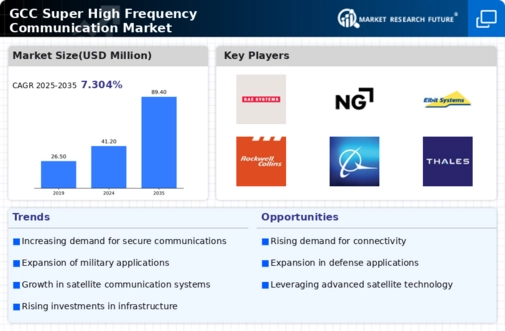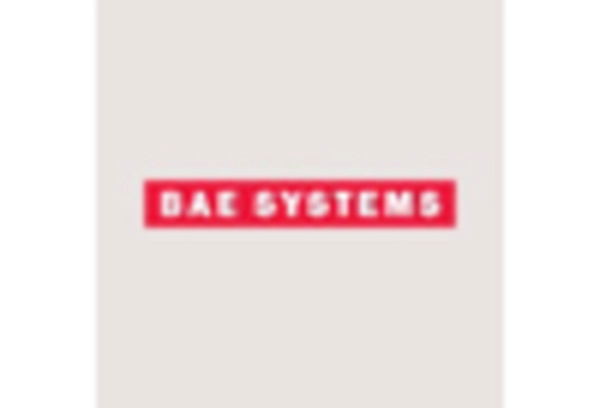The super high-frequency-communication market is characterized by a dynamic competitive landscape, driven by technological advancements and increasing demand for secure communication systems. Key players such as Raytheon Technologies (US), Northrop Grumman (US), and Thales Group (FR) are at the forefront, each adopting distinct strategies to enhance their market positioning. Raytheon Technologies (US) focuses on innovation through substantial investments in R&D, aiming to develop next-generation communication systems. Northrop Grumman (US) emphasizes strategic partnerships and acquisitions to bolster its capabilities, while Thales Group (FR) is concentrating on regional expansion, particularly in the GCC, to tap into emerging opportunities. Collectively, these strategies contribute to a competitive environment that is increasingly characterized by technological sophistication and strategic collaborations.
In terms of business tactics, companies are localizing manufacturing and optimizing supply chains to enhance operational efficiency. The market structure appears moderately fragmented, with several key players exerting influence over various segments. This fragmentation allows for a diverse range of offerings, yet the collective strength of major companies shapes the competitive dynamics, fostering an environment where innovation and strategic positioning are paramount.
In October 2025, Raytheon Technologies (US) announced a partnership with a leading telecommunications provider in the GCC to develop advanced secure communication solutions tailored for military applications. This collaboration is strategically significant as it not only enhances Raytheon's technological capabilities but also positions the company to better serve the specific needs of regional defense forces, thereby solidifying its market presence.
In September 2025, Northrop Grumman (US) completed the acquisition of a regional technology firm specializing in high-frequency communication systems. This acquisition is likely to enhance Northrop Grumman's product offerings and accelerate its entry into new markets, reflecting a strategic move to consolidate its position in the super high-frequency-communication sector.
In August 2025, Thales Group (FR) launched a new line of secure communication devices designed for both civilian and military applications, aimed at addressing the growing demand for reliable communication in challenging environments. This product launch indicates Thales's commitment to innovation and its proactive approach to meeting market needs, potentially increasing its competitive edge in the region.
As of November 2025, current trends in the super high-frequency-communication market include a strong emphasis on digitalization, sustainability, and the integration of AI technologies. Strategic alliances are increasingly shaping the competitive landscape, enabling companies to leverage complementary strengths and enhance their offerings. Looking ahead, competitive differentiation is expected to evolve, with a notable shift from price-based competition towards innovation, technological advancements, and supply chain reliability, underscoring the importance of adaptability in a rapidly changing market.

















Leave a Comment